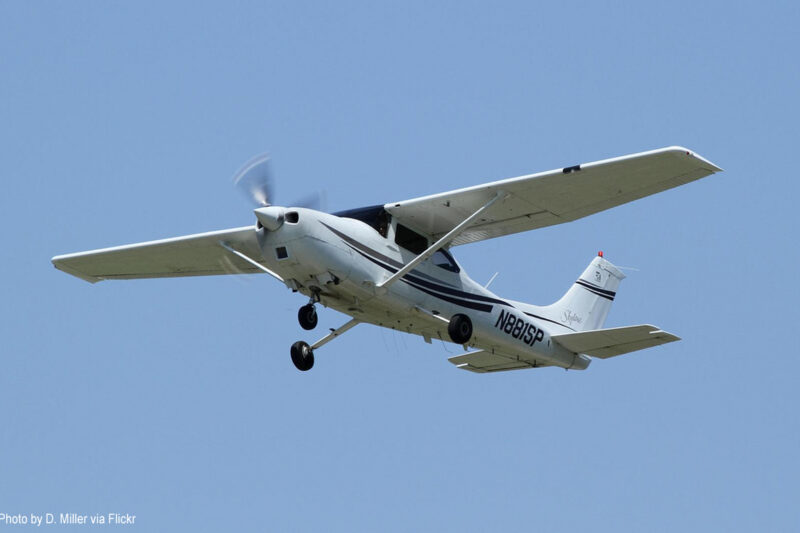
Following up on a May story by the Washington Post about mysterious aircraft spotted circling over Baltimore, the Associated Press reported today that the FBI maintains a secret air force with scores of small aircraft registered with 13 front companies under apparently false names, and that these planes fly over American cities frequently.
Obviously law enforcement has been using aircraft for many decades. So what’s spooky about this story? Several things:
- These are not your grandparents’ surveillance aircraft. As I discussed when the Baltimore story broke, there are several very powerful mass-surveillance technologies that utilize low-circling manned aircraft, including “Dirtboxes” and persistent wide-area surveillance in which an entire 25-square mile area can be monitored, and vehicles tracked, for extended periods of time by a single camera.
- We need more information about the scope of surveillance these planes are being used for. The FBI told the AP that its fleet was “not equipped, designed or used for bulk collection activities or mass surveillance.” We are glad to hear that—but that statement bears more interrogation. For example the AP reports that the FBI “occasionally” uses Dirtboxes (aka “IMSI catchers” or “cell-site simulators”) on the aircraft. Those certainly qualify as mass surveillance devices. If the FBI is only using the aircraft when it has a specific target rather than for broad fishing expeditions, that would be a good thing—but that is not the same thing as saying that data on masses of people is not being swept up.
- The FBI told the AP that “under a new policy it has recently begun obtaining court orders to use cell-site simulators.” But we don’t know what kind of “court orders” they’re getting to use the devices. Rather than warrants, they may just be obtaining “pen register” orders, as we have seen done by local police in Baltimore and elsewhere.
- The sheer scope of the program. A 2010 federal budget document found by the AP mentions at least 115 planes in the FBI’s fleet, and the FBI has flown over 100 flights over more than 30 American cities in recent weeks, the AP found.
- Surveillance turning inward. One trend we’ve seen in the last 15 years or so is a great “Turning Inward,” as US surveillance capabilities originally built to spy on the Soviet Union and other overseas targets have swung inward on the American people. The FBI has a spy plane fleet, hidden behind shell companies with three-letter names and headed by ghost CEOS with signatures that don’t match over time— it’s all very CIA. Yet these are American cities that they’re flying over.
- Cessnas today, drones tomorrow. Another thing that makes these flights spooky is the prospect that manned aircraft may soon be replaced with drones. And that will make it all the cheaper and easier to deploy these flights all the more frequently over even more American cities and towns. And unlike manned aircraft, drones may not be easy to track through web sites like flightradar24.com, which shows the manned aircraft currently in the air around the world and played a key role in uncovering the FBI’s air force. It is true that under orders from President Obama the DOJ recently promulgated a privacy policy for its use of drones, but that policy is not very airtight—for example, it says DOJ agencies can’t use the planes “solely for the purpose of monitoring activities protected by the First Amendment.” That is good, but when agencies want to do surveillance they always claim to have other reasons so the monitoring is not “solely” for such monitoring.
In the end, it doesn’t make sense for drones to be subject to privacy regulations, but not manned aircraft. Manned aircraft can and do raise very real privacy concerns; for example their use in persistent wide-area surveillance, and in voyeurism incidents. But manned aircraft are not regulated today, because historically they have been expensive and their use therefore relatively rare, and their surveillance abilities well-understood and relatively limited. What this story tells us is that their use is now more widespread than we thought—and we know their surveillance capabilities are growing by leaps and bounds. Drones, by raising the prospect of endless free and easy aerial surveillance, have brought to the fore issues that already existed with manned aircraft, and new regulations designed to protect against aerial surveillance should not distinguish between manned and unmanned aircraft.




